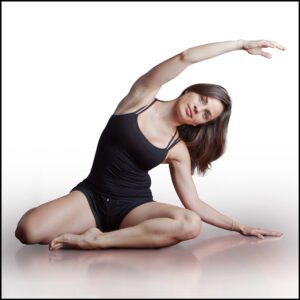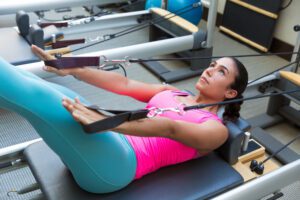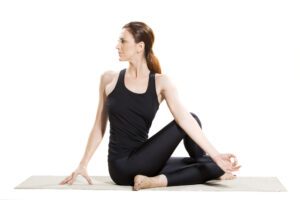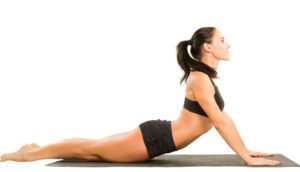 This article discusses Pilates Vs. yoga, looking at the similarities, ways they differ, and their benefits.
This article discusses Pilates Vs. yoga, looking at the similarities, ways they differ, and their benefits.
Pilates and yoga are gentle forms of exercise that offer numerous health and fitness benefits.
The most obvious of these is improved flexibility and stronger, more defined muscles.
The improved flexibility is due to the movements targeting the body’s major muscle groups.
Increased strength is a result of the resistance the body provides while exercising.
Both exercises feature moves targeting the entire body with a strong focus on increasing core strength.
While Pilates and yoga share many similarities, there are also some differences.
Knowing these will help you decide which, if either, may suit you the best.
First, we will look at the origins of Pilates Vs. Yoga.
Table of Contents
The origins of Pilates Vs. Yoga
The origins of Pilates Vs. Yoga differ greatly.
Pilates is an exercise system created by Joseph Pilates in the 1920s war years. 
Born in Germany in 1883, Pilates suffered various childhood illnesses.
This prompted him to seek ways to improve his health, including taking up yoga, martial arts, and other mind and body disciplines.
Pilates’ interest in body movement grew when he worked with injured soldiers during the First World War, helping them rehabilitate through motions that gently stretched, stabilized, and strengthened their muscles.
In the after-war years, he introduced his unique exercise style to dancers, actors, and athletes in New York City. And the rest, as they say, is history.
Yoga is an ancient spiritual practice involving a series of poses connected to the breath that impart a positive mental and spiritual impact.
Its origins date back to India over 5,000 years, with some researchers believing it is 10,000 years old.
This uncertainty exists because the teachings were shrouded in mystery in its early days, with sacred texts transcribed on palm leaves that no longer exist.
What we do know, however, is that back then, the focus was essentially spiritual.
It was not until 1947, when Indra Devi opened her studio in Hollywood, that yoga took off as a form of exercise in the West.
In the decades since, yoga has gained millions of followers and been popularized by both western and Indian teachers.
Pilates and Yoga Similarities and Differences
Pilates and yoga are low-impact exercises focusing on bodyweight resistance. They offer many benefits, including improved overall health and a better quality of life.
They can also help relieve stress and are helpful during rehabilitation from an injury.
The primary difference between the two is that yoga has a spiritual element.
As with any exercise, it’s essential to use the proper form to get the most from Pilates and yoga.
Pilates and yoga are both low-impact and improve strength and flexibility.
A distinct difference between the two is that you will adopt a pose and either maintain it or move on to another posture when doing yoga..
With Pilates, after engaging your core, you will move your body, arms, or legs through a series of movements that challenge it.
Equipment requirements
Equipment requirements for both Pilates and yoga are minimal, with a mat the only necessity.
A mat will cushion your joints during floor exercises, making your workouts more comfortable. It will also help prevent you from slipping, so your sessions will be safer.
A yoga block facilitates some of the more challenging yoga postures.
A strap assists practitioners in achieving a greater range of motion while stretching.
Aerial yoga is an option if you’re looking for something different.
You can take a class or exercise at home. To do the latter, you will need a yoga hammock or swing.
Pilates rings, bands, and balls add resistance to workouts.
Pilates reformers and Cadillacs are large pieces of equipment found in studios that allow you to take things to the next level by adding more resistance.
They are also available for home use.
The Benefits
- Regular Pilates and yoga sessions may have the following benefits:

- The exercise is safe for people of any age and fitness level, and pregnant women
- Many of the moves are adaptable to accommodate people with physical limitations
- It can often be used while rehabilitating from an injury
- Workouts strengthen the core to improve stability
- Both offer total body muscle toning
- They enhance mental clarity
- Regular sessions using the proper form can improve posture
- The workouts can improve balance
- Pilates and yoga can increase flexibility and range of motion
- They may ease back and neck pain of those afflicted
- Both offer stress relief benefits
- They may enhance the quality of sleep
- The exercise is suitable to do at home or in a yoga or Pilates studio
- Regular workouts may assist with weight maintenance and weight loss
- They may ease menopause symptoms in some women
NB: If you are pregnant or recovering from an injury, check with your doctor before starting a new fitness regimen.
The Drawbacks
- Neither Pilates nor yoga offers significant cardio benefits
- They don’t deliver the same muscle toning benefits as lifting weights
- Progress results are slower than with some other exercise forms
- As with any exercise, if done with incorrect form, injury can occur
- Concentration is required, so it won’t be for you if you want to do mindless exercise
Final Thoughts on Pilates Vs. Yoga
When it comes to assessing Pilates Vs. yoga, both have a lot of valuable benefits and minimal drawbacks.
In recent years, yoga and Pilates have evolved considerably.
Gyms and studios worldwide now offer various styles of both, so there’s something for everyone. 
If you’d prefer to exercise at home, many yoga and Pilates DVDs enabling you to do so are available.
Both exercises are ideal for improving core strength and balance when practiced regularly.
Many of the movements in Pilates particularly require you to support your body weight.
Along with improving your core strength and balance, you will tone and strengthen various other muscles.
The workouts will also enhance your flexibility and body control.
Regular yoga sessions can increase the strength and flexibility of your muscles and joints.
Choosing a fast-paced type of yoga such as Vinyasa or flow yoga generates body heat. As well as being regenerative, this burn a considerable number of calories.
Slower yoga postures such as those in Yin yoga involve stretching, and holding the positions for longer is especially beneficial for improving flexibility.
Whether you ultimately choose Pilates or yoga, you’ll be getting an excellent workout with many benefits and few drawbacks.

